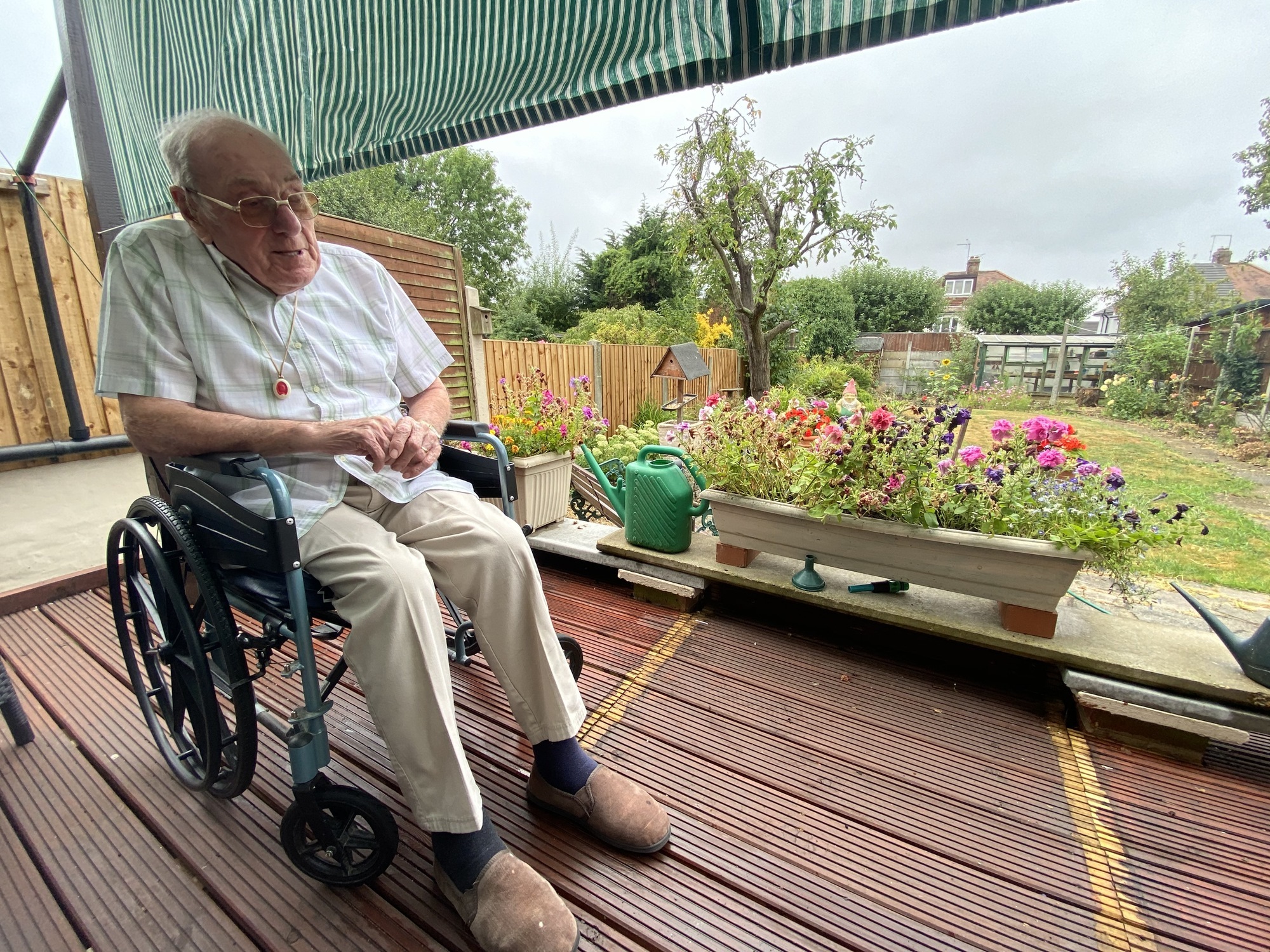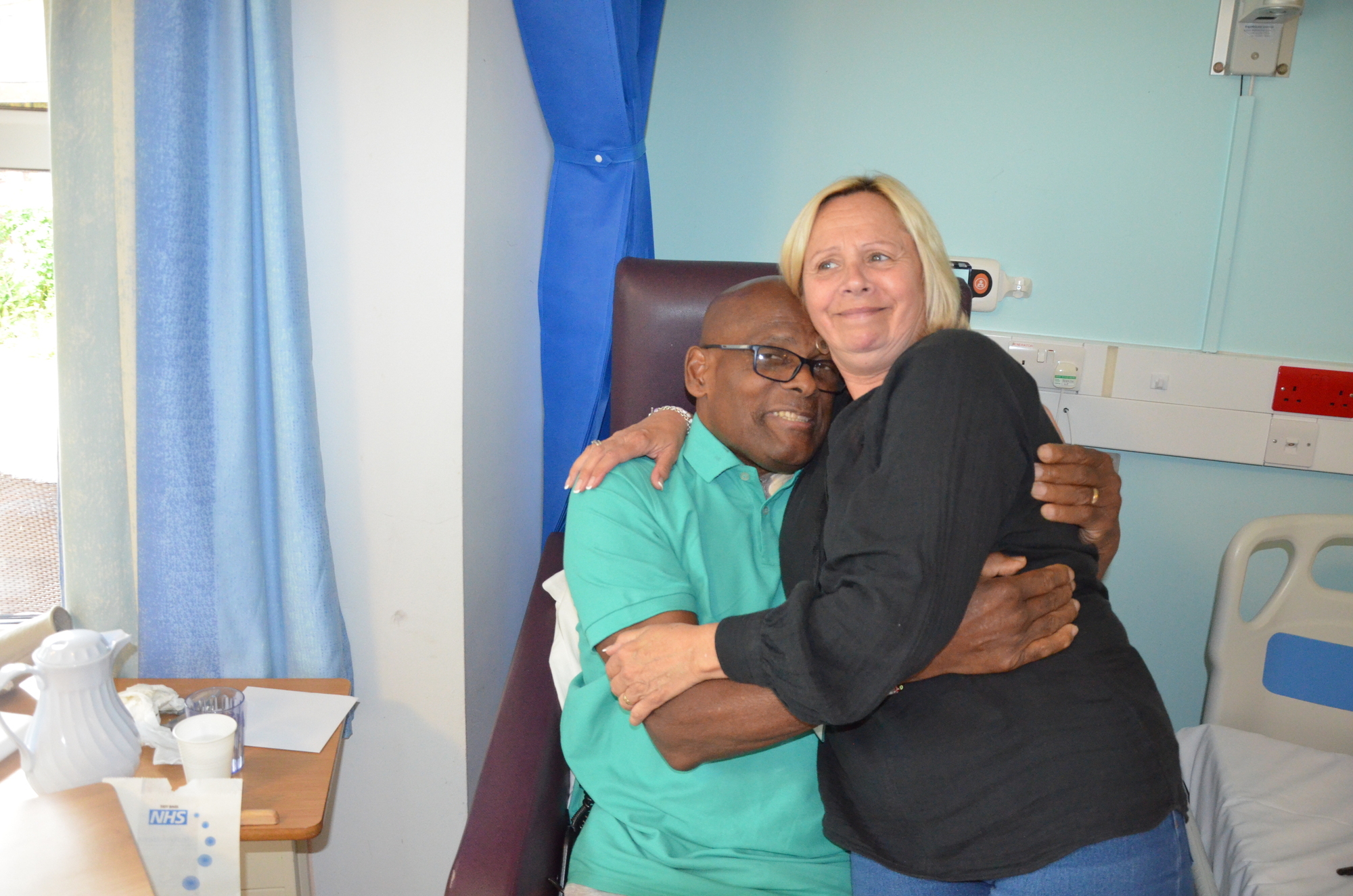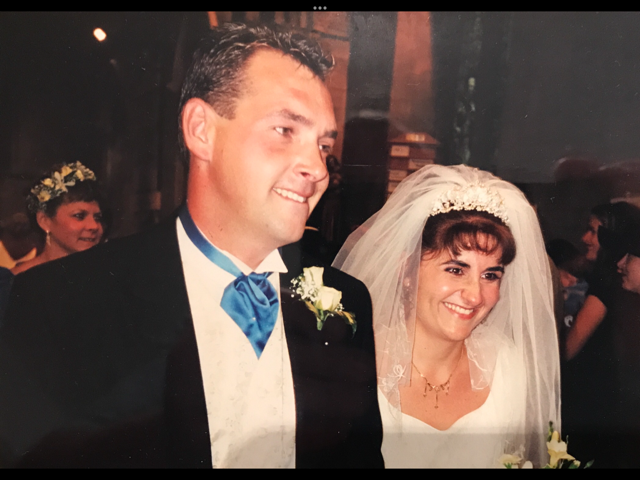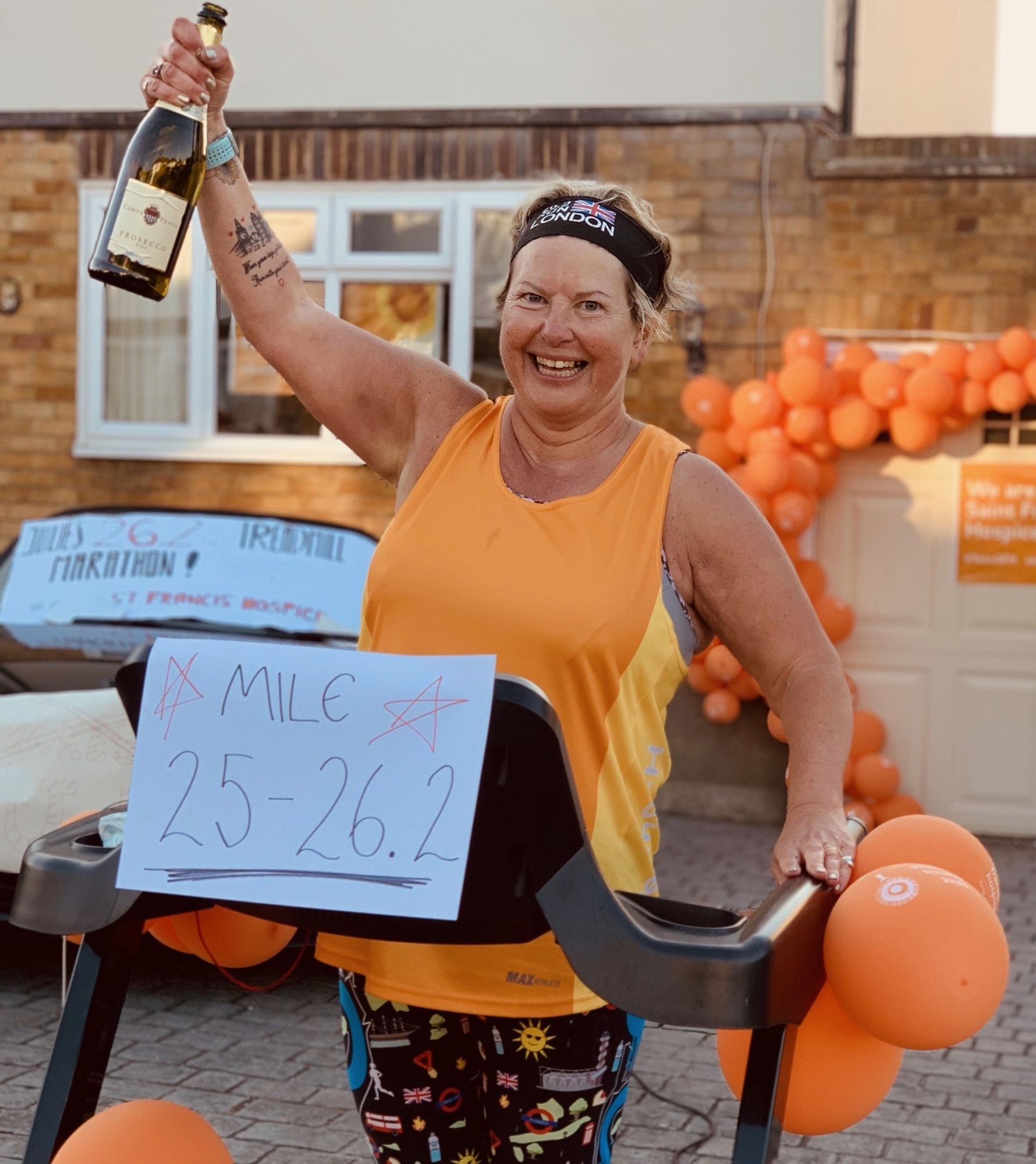Peter Bickmore's memoirs of Saint Francis Hospice

Peter Bickmore was there during those very beginnings. He played a pivotal role in turning the vision of a hospice on a hill in Havering-atte-Bower into a reality. He tells his story.
Our father was in a low-paid job on the railway, after serving as a Petty Officer in the Royal Navy during WWI. It was the 1920s, and the UK was in the midst of The Great Depression.
Life at that time was very hard for parents with young families. Dad was the breadwinner, but at times, the loaves were very small. In 1926, we faced more turmoil when Evelyn passed away at four years old. After the death of my sister, Evelyn, my vivid memories began, and at 96 years old, remain with me today.
My siblings grew in numbers. Life, as I remember, was difficult but not without hope. We lived in a community with a great spirit of togetherness, which was sincerely demonstrated by neighbours with their ever open doors when in need of comfort and support. As a family, we quickly became absorbed into the life of the community.
I grew up without television, mobile phones, and the social media type of communication that's now available. We could develop our minds to think for ourselves more readily and not have the pressure to conform. We also respected disciplines and parental authority, which in those days, we strictly observed.
Living through World War II
As the war clouds were gathering, we could see and feel the anxiety within our parents. Another war was threatening, only a few years after they had suffered from the agony of WWI. They were still mentally scarred. Mum and Dad were living with the fear of the horrors happening again but this time with their children on the front line.
In 1939, I won an apprenticeship in a factory making nautical instruments to help the war effort, having left school at the age of 14. My reward for 47 hours' work a week: 13 shillings and 4 pence.
My contribution to the family budget was well received. The pace and readiness in preparation for the expected conflict seemed to be accelerating. The walls of the factory were painted in camouflage colours brown and green to resemble a farm as viewed from the air and confuse enemy aircraft.
I joined the Auxiliary Fire Service as a messenger complete with bike, boiler suit, and steel helmet. I well recall Mother was a little disturbed when she was told that I might get killed. I was only sixteen.
Three years later, I joined the Navy at eighteen years old. My family faced another devastating loss. In 1943, a telegram arrived from the Admiralty with sad news. One of my brothers, Ernie, was missing on active service during the capture of Hong Kong by the Japanese.
Two years later, in 1945, we received official confirmation of Ernie's death by telegram. It was then that the tragic details of the circumstances of his death became known. In 1942, many soldiers were captured when Hong Kong fell. As prisoners of war, they were being transported to Japan on a Japanese ship, 'Lisbon Maru', which was intercepted and sunk by an American submarine. Sadly, multiple lives were lost, which again proves the futility of war: there are no winners.
Adapting to life after the war
As WWII drew to a close, I had been stationed all over the world. The last leg of my homeward journey, having left the train at South Woodford, was to wait for the hourly bus that took me to my family home in Chigwell.
My wait was rewarded as I scrambled aboard with my kit bag. I wasn't sure if my travel warrant covered bus fares, so I produced my two pennies. The conductor took a ticket from his ticket rack and punched a hole in it with his bell sounding machine. I was on my way home.
My home came into sight. With a lump in my throat and a tear in my eye, I pressed the bell for the bus to stop. Just as Tom Jones sang in Green Green Grass of Home, I thought:
The old home town looks the same
As I step down from the train (well, bus)
The war came to a dramatic end after the terrible destruction and loss of life with the dropping of atom bombs on the Japanese towns of Hiroshima and Nagasaki. It was now time to resume my courtship with my teenage sweetheart, Doreen, which had been left on hold for the past two years.
I'm still amazed at my mother's determination, strength and grit, coping during all those war years. For a person so small in physical stature, she had the power to endure with her courage, fortitude, and inexhaustible store of love for her family. We took Mum's strength of character into our future families.
I recall a period of considerable unease that had developed after my experiences of war. The psychological term used today is 'post-traumatic stress disorder' (PTSD). During those days, there was a need for professional counselling, but it wasn't available. It was the understanding of my caring family, together with the love and support of Doreen that saw me through this challenging period of my life. I then married the love of my life.
On Remembrance Sunday in 1968, I attended the Service of Remembrance at St John's Church in Havering-atte-Bower with my wife, Doreen. We were soon attracted to the Church and its message of ancient and modern worship, in the most idyllic setting of the village green and stocks.
Doreen and I quickly became involved in the workings of the Church, and I took on the role of one of the Church Wardens that year. This fulfilled our spiritual needs, and we were happy to become more active in the village's goings-ons.
Founding the Hospice on the Hill
During the late 1970s, a tale was spreading in the village that Havering Hall a large mansion situated near the Church was to become a hospice. This caused the villagers a little unease.
To quell any misunderstanding by the residents, a meeting was arranged in the Church Hall. Villagers met the pioneers of the project: Joan Gornell, Dr Dorothy Rule, and Dr Richard Beaver. Doreen and I were also present.
We learnt that it was well within the realms of possibility that the Hall could be converted to a hospice. For Doreen and myself, this news certainly had an impact. I was nine years away from retirement. At 56, to volunteer in such an environment was a challenge we both could aspire to.
I applied to become a volunteer, and it was met with the response to my dreams. I became a full-time worker in the Saint Francis Hospice project in 1983 as Caretaker and Handyman.
That Christmas, a night watchman was employed to oversee the site during the holidays. The New Year was now with us, and the vision of a hospice was a reality that became more visible day by day.
The building work was completed, and carpets were laid. Furniture and beds were delivered to take place in the rooms. Doctors, matrons and nurses were appointed with time to become acquainted with the Hospice and each other.
In 1984, the first patient arrived: George Smith from Writtle. As each patient entered, the staff gave them a warm greeting with love. The terms of my contract were reviewed, and I was now the Hospice's Works Supervisor, which included overseeing the Domestic staff and General Maintenance. This included ground maintenance and there was a lot to cover.
Establishing the quality of Hospice care
Volunteers, many from the surrounding area, were a great help during that initial setting-up period and they remain so 36 years later. The Hospice saw the coming together of the local community as it still does now. One volunteer funded and built an aviary within sight of the patients' rooms.
Patients didn't miss out on events going on outside. Come Guy Fawkes Night, we had a bonfire and fireworks. Patients from the rooms on the 'wrong' side joined those overlooking the pond to enjoy the fizz, colour and loud bangs with their families.
Christmas was soon upon us, and for the carol singing, we welcomed the children from Dame Tipping School, which is still just down the road from the Hospice. I felt this was a good education for the children. For the patients, there was still more to come.
Christmas trees, decorations, and the air of festivities shone all around the Hospice, with thanks to all our volunteers. Our Medical Director, Dr Anthony Smith, arranged a pantomime where the staff dressed up in suitable attire. Although we never made the Queen's Theatre in Hornchurch, it was great fun for the patients to see us take part.
The year of 1985 arrived, and we greeted it with the same enthusiasm and commitment of the past six months. As spring made its entrance, more time was needed to keep the Hospice's grounds tidy. After an approach to management, it was agreed that I needed an apprentice to help with my increased workload.
During the summer, we decided to have a sports day, which took place on the Hospice's lawn. The marking out of the white-lined lanes took place with the help of the Ardleigh Green & Havering-atte-Bower Cricket Club. This was to ensure there was no cheating or foul play! We had a delightful afternoon.
During these early stages of the Hospice, we had a patient who was a member of the Flying Fortress Club. For his enjoyment and to our amazement, a great aircraft flew over the Hospice in salute to our patient.
Overcoming the Great Storm of 1987
It's now the Great Storm of 1987. That October, the 135 mph winds caused much damage uprooting trees and lifting off roofs. I was somewhat apprehensive as to how the large trees in the Hospice grounds would survive, especially the cork tree but it still stands today.
I was soon to discover the area of damage. A fallen tree blocked the main road to the Hospice, but with the aid of the Hospice's drivers, we were able to clear a pathway, and I was able to get to work.
When we learnt that the cook was having travelling problems, I returned home to seek help from Doreen, who gladly volunteered so that our patients were not left hungry.
Remembering the Hospice fondly
Retirement arrived in 1989, and I was subjected to the traditional nurses' goodbye a dumping in the bath, followed by a crowning with dough all in good fun.
It is with heartfelt joy and sincere gratitude that I recall my long association with the Saint Francis Hospice project. From its very beginning, the dedication of staff, supporters, volunteers and financial backers made our Hospice pioneers' dream come true.
Sadly with a heavy heart, my ever-loving and truly faithful marriage closed when Doreen passed away peacefully during the Christmas of 2012.
Thankfully, I can look back on those sixty-three years of marriage with cherished memories of the happiness and joys that were ours remembering the love we shared and the support of a loving family. We have been blessed with children, grandchildren and great-grandchildren.
Death leaves a memory that no one can steal.









